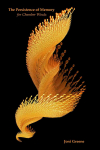Autumn Reflections is a collection of six movements which were written between 2001 and 2009. Each movement features a separate haiku poem from traditional Japanese poetry (14th-17th century) written by the poets Matsuo Bashō, Kyorai, Monk Zenna, Takarai Kikaku, and Venerable Senjun. Although each poem contains only three lines of text, the rich imagery conveys short narratives on the beauty of the autumn season. The story travels from night to day, changing from clear skies to lightning storms and ending in a light evening rain shower.
The most important aspect of this work is the portrayal of color and texture. The listener and performer should find themselves basking in a beautiful full moon at the start of the work and then feel as if they were walking repetitively "round and round." Musically this is expressed with the arrival of a full moon imitated in the choir by expanding from a cluster to over a three octave span. Then through much repetition and imitation a formal round begins between the altos and basses.
The second movement, Shining Faintly, was written last in the cycle especially for the VocalEssence Essentially Choral Workshop Readings which took place April 18, 2009. Through intimate glissando murmurs and solo passages, the moon's faint presence just before day break emerges. Musical events occur as short passages connecting one line of text to the next with "shining faintly" serving as a refrain.
Unlike the polyphonic setting of the first and second movements, the third features a homophonic setting with all voices singing the same rhythm and text. Because of the constant pulse and slow changes of harmony over time, this section is reminiscent of minimalism. The idea of repetition carries through the movement to the third line of text "at break of dawn" which evokes the feeling of calm felt at sunrise.
The fourth movement is the most intense of all the movements. Much like a lightning storm that is seen at first from afar, the movement begins with soft foreboding rumbles on the word "lightning" in the lowest range of the tenors and basses. As the storm intensifies echoes occur between the voices imitating the delay between lightning and thunder in nature. The fifth movement features a culmination of all the musical textural presentations used so far in the work. A combination of homophonic and polyphonic textures are used which end with a light rain shower. To create the sense of a steady autumn drizzle, repeated eighth notes are used throughout the choir.
The form of the first five movements is delivered in three parts matching the three lines of text for each haiku. This form delineation is consistent with the poetic approach by traditional Japanese haiku poets who tended to focus on observing nature as three separate ideas which together depict a scene. While the first four movements naturally developed into three parts, the sixth movement simultaneously presents the text. Continuing the rain drop pulse from movement five, the rain does not dissipate in the sixth movement when the second and third lines of text are presented.
PDF (lizenziert)




